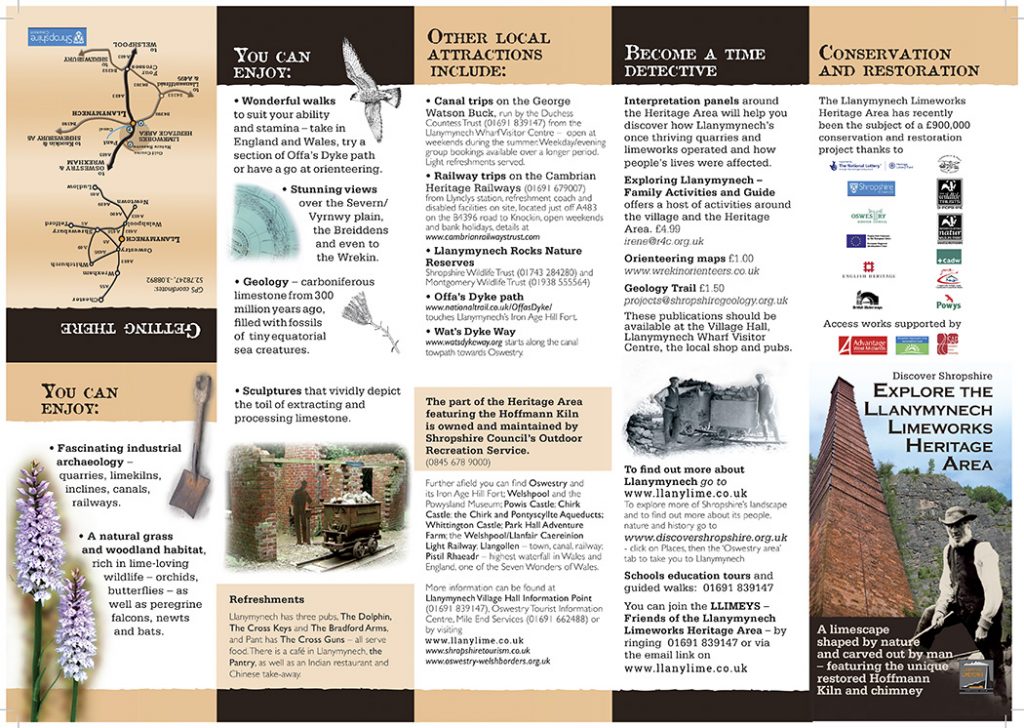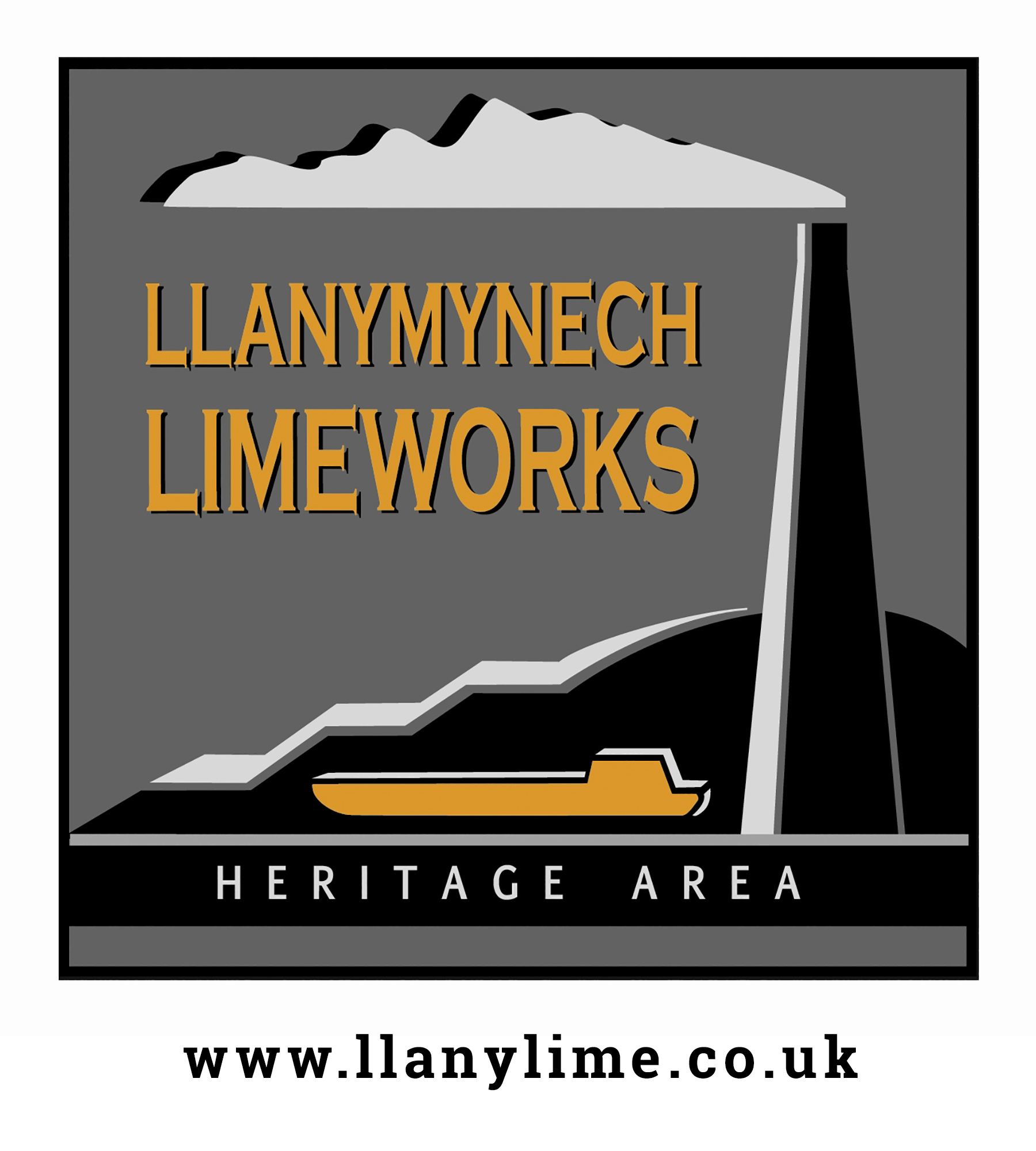Roll your cursor over the map of the Heritage Area and Click on the coloured circles and icons on the map. You will then see a short explanation on the left. You can use this to plan your visit around the Heritage Area.
Llanymynech Limeworks – Interactive Map
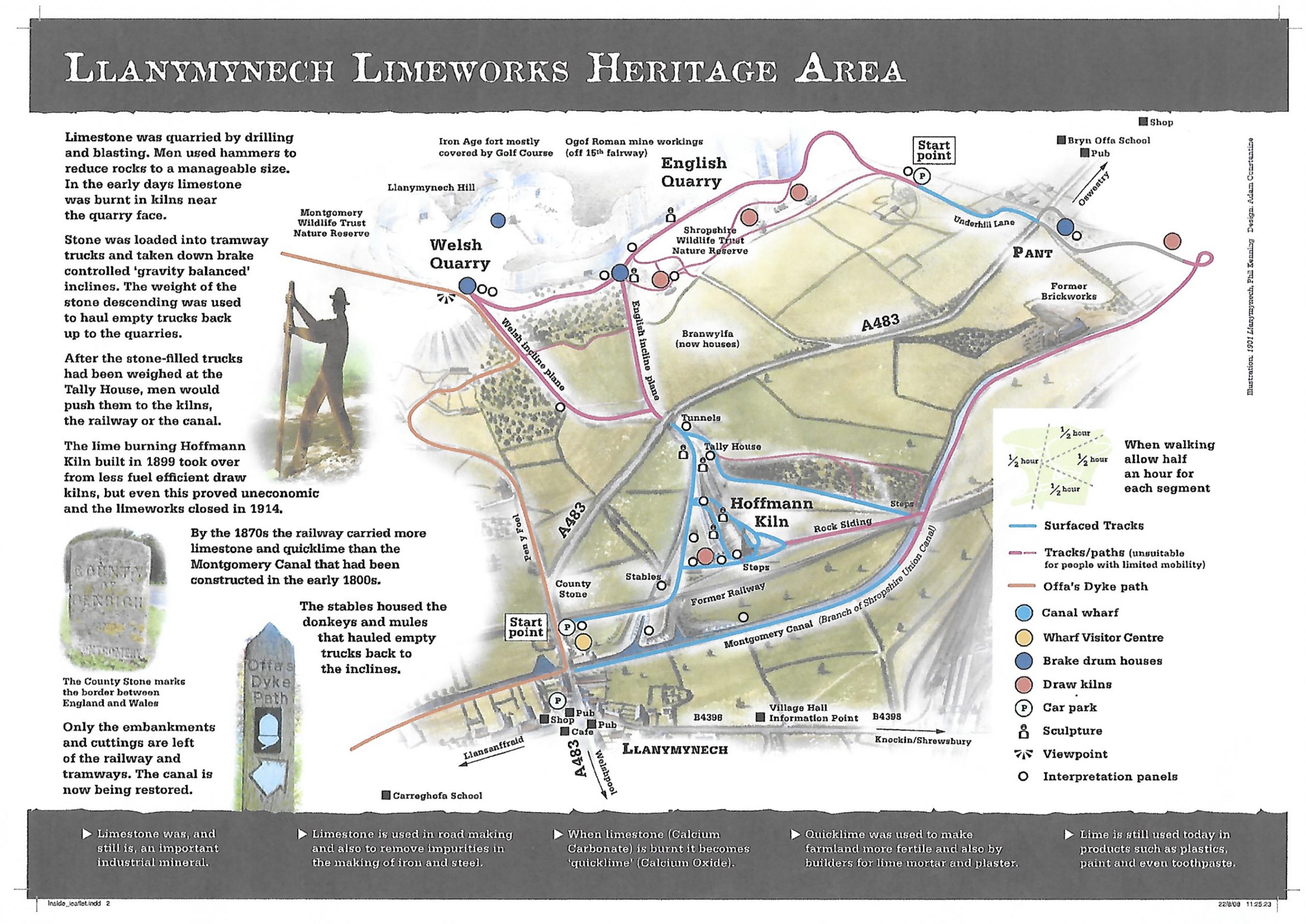
Wharf Visitor Centre
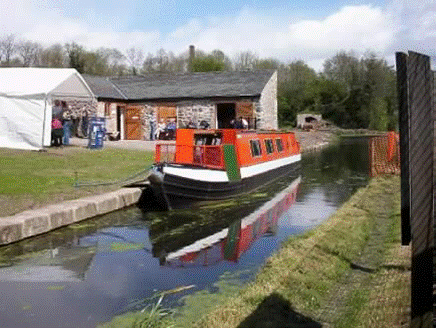
Why don't you relax and take a 30 minute cruise along the Montgomery canal in the George Watson Buck. We have boat trips on the canal throughout the summer, at weekends in the early evenings and school holidays.
Click HERE to go to the Llanymynech Wharf Visitor Centre page and find out more about our boat trips.
Hoffmann Kiln and Chimney
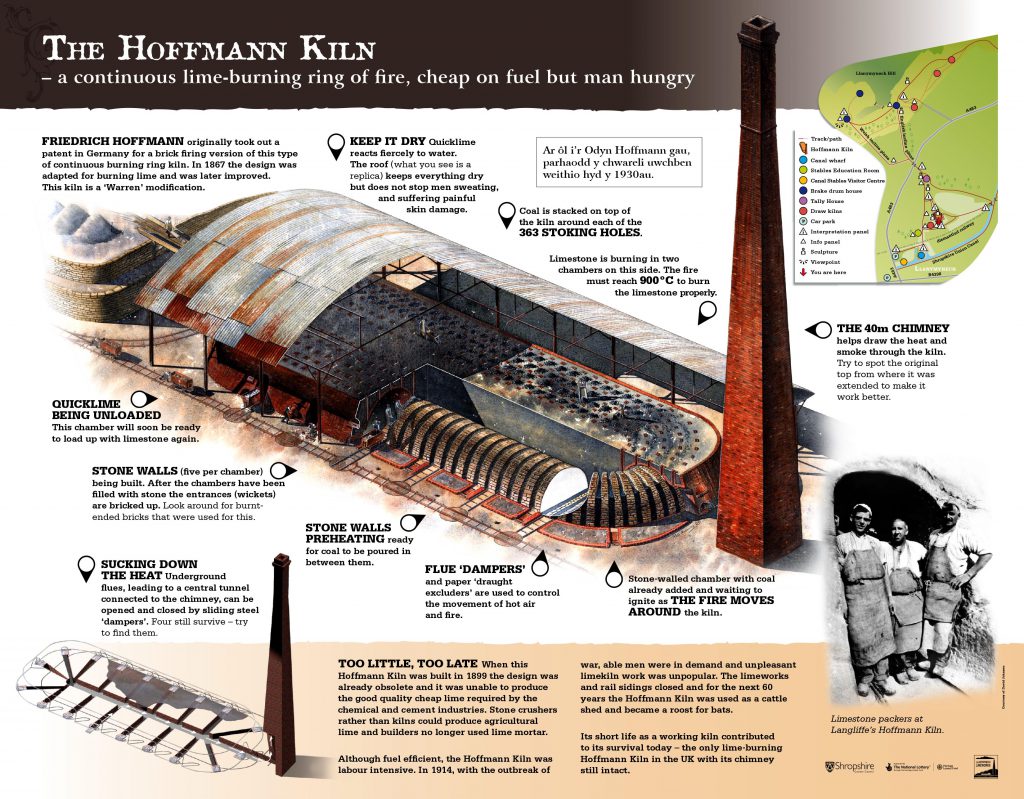
Here you see the unique Hoffmann kiln and chimney. The kiln took 5 years to restore to the condition you now see it in and it attracts hundreds of visitors each year. Both the Hoffmann Kiln and the Chimney are Grade II listed Buildings.
Click HERE to see a larger version of the panel. Use your browser back button to return to this page.
Welsh Brake Drum House
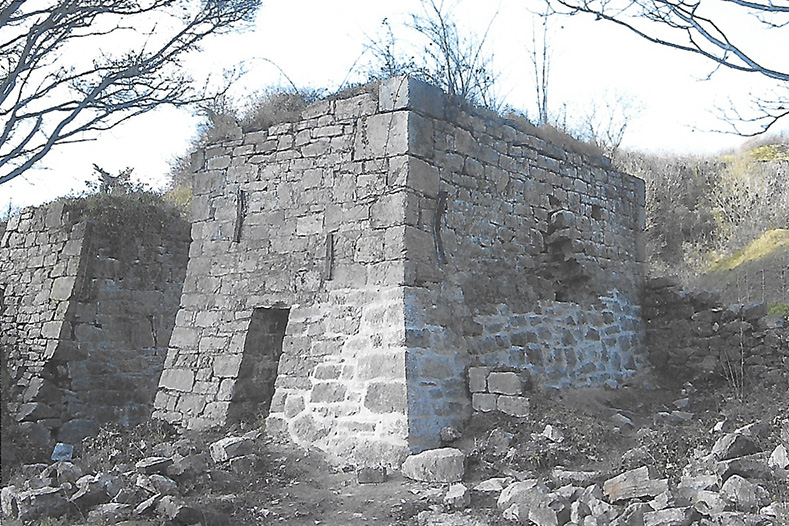
The Welsh brake drum house is at the top of the Welsh incline and has been partially restored to stop the walls from collapsing.
English Brake Drum House
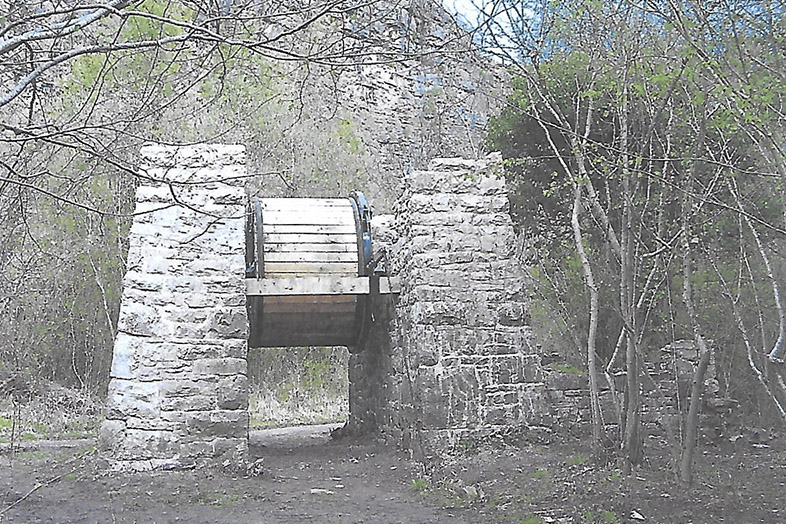
The English Brake Drum House sits at the top of the English incline. It has been partially restored, including a replica brake drum. Also, you will see one of the sculptures standing where the brake lever was sited.
Click HERE to see the interpretation panel. Use your browser back button to return to this page.
The Montgomery Canal
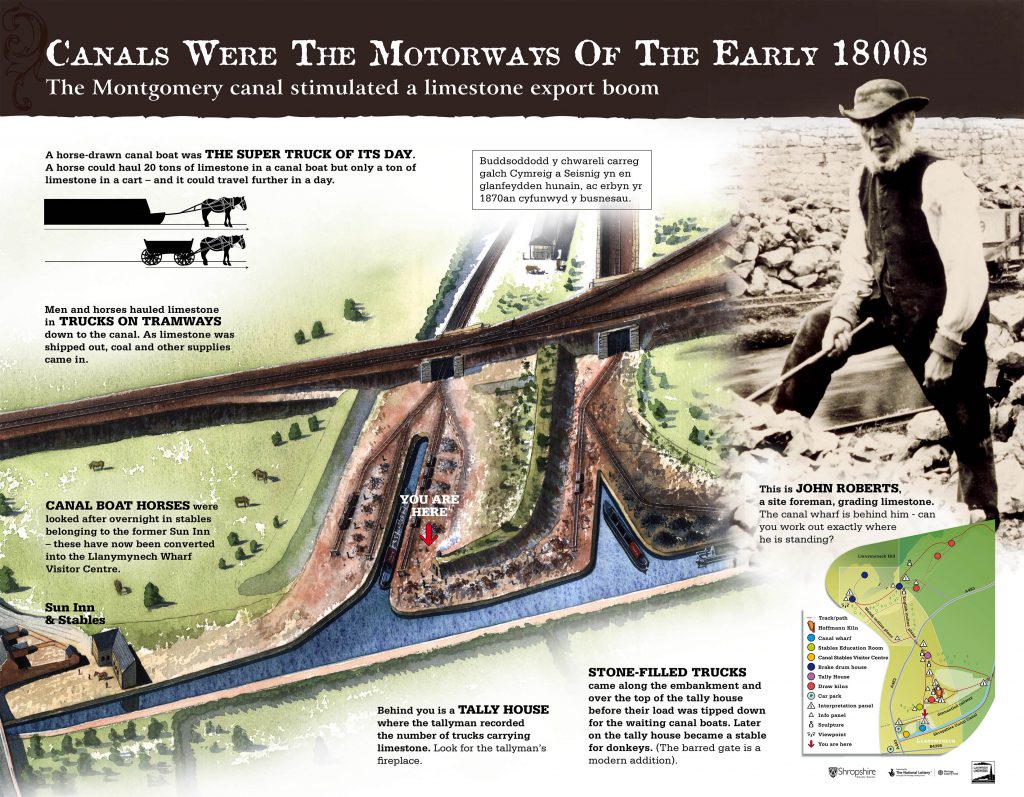
The canal was the super highway of its day and enabled goods to be transported more easily.
Here you will find the old Tally Hut and the embankment where the trams would unload their limestone to be transported.
See a larger version of the panel HERE. Use the browser back button to return to this page.
Draw Kilns
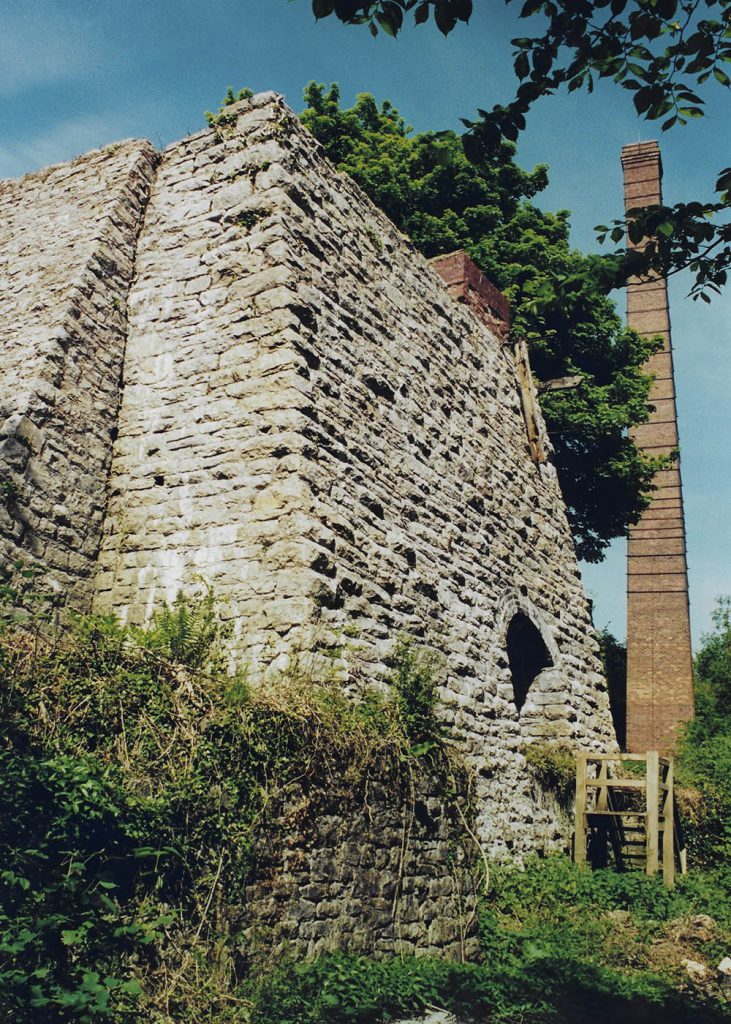
The picture above shows the draw kilns before restoration took place
The two draw kilns stand next to the Hoffmann kiln and were built in the 1870's but abandoned by 1900. They are Grade II listed buildings.
The Stables
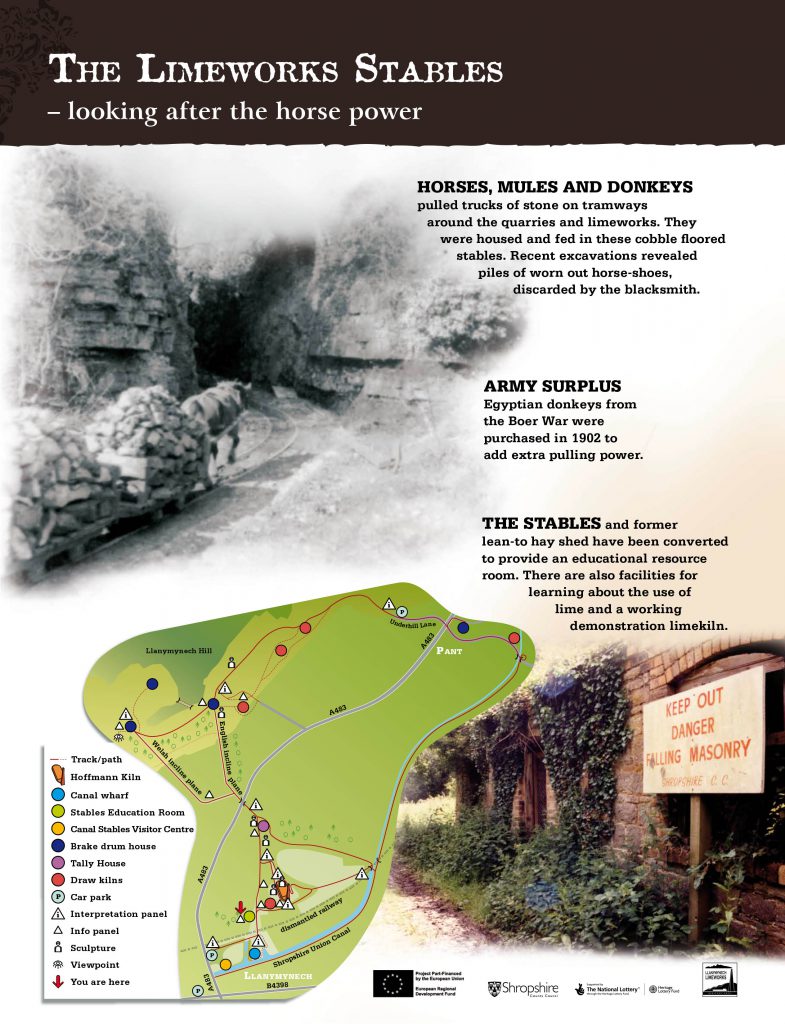
Hillside Draw Kilns - Late 1700's
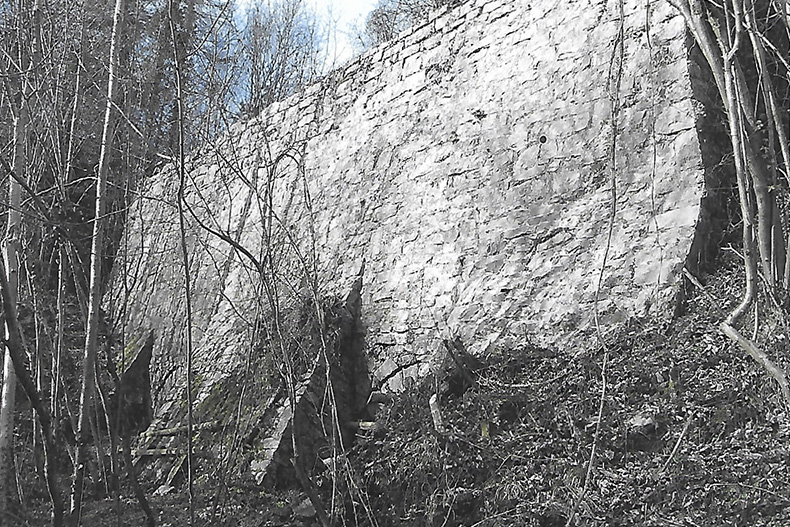
These are a pair of kilns built before the advent of the canal and railway in the 1800's, which have been partially restored and you can view into the kilns from above. Further to the east there is a bank of three more kilns like these, and then further on another bank of four
Click HERE to see the interpretation panel sited above the draw kilns. Use your browser back button to return to this page.
Welcome to the Llanymynech Limeworks Heritage Area
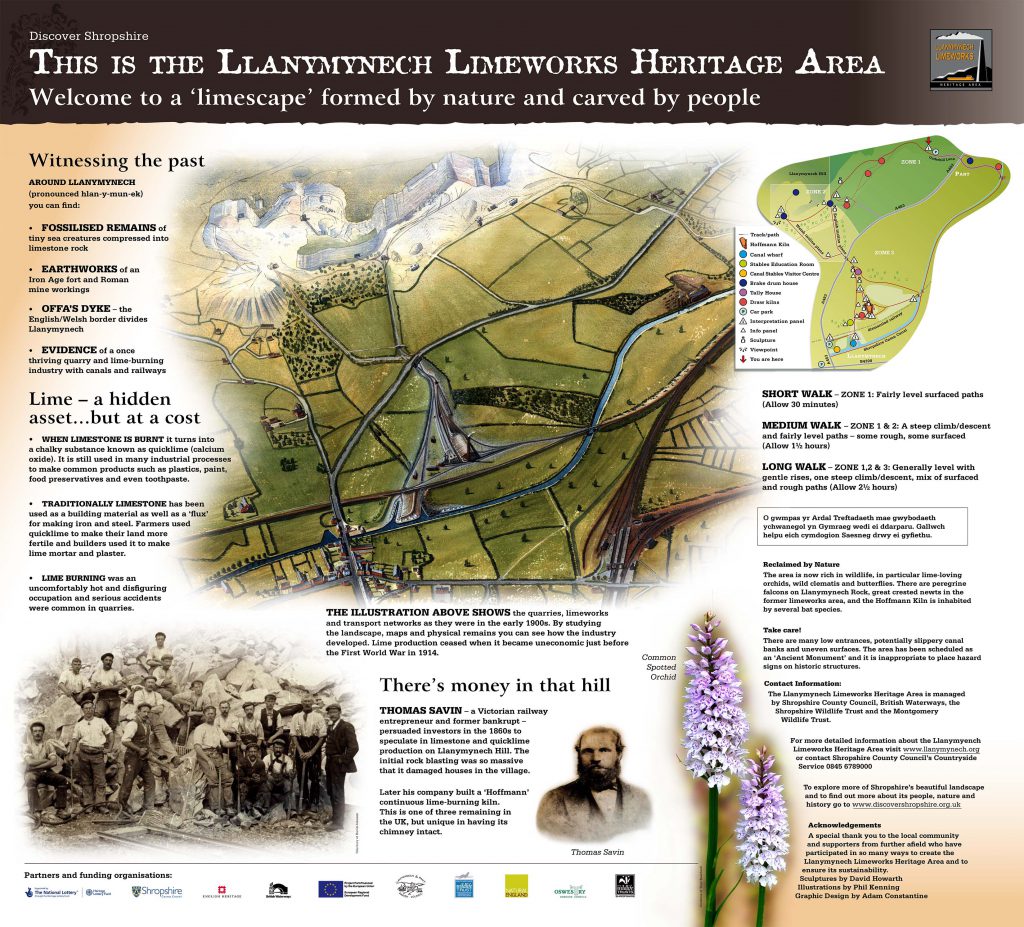
The Llanymynech Limeworks Heritage Area is a 'limescape' formed by nature and carved by its people. What we call the 'Heritage Area' is designated as a Scheduled Monument.
Click HERE to see a larger version of the interpretation panel. Use your browser back button to return to this page.
Machinery
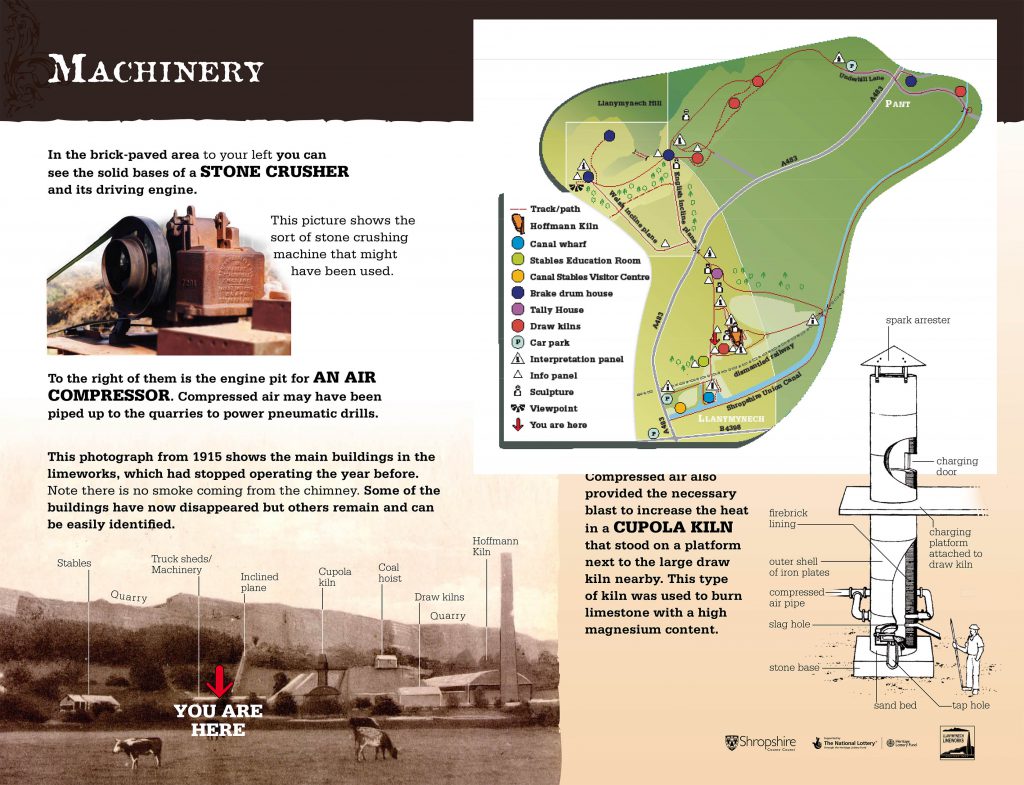
Here you will find the remains of the plinths that held the machinery, such as stone crushers and air compressors.
Click HERE to see a larger version of the interpretation panel. Use your browser back button to return to this page.
Lime Burning - The Traditional Way
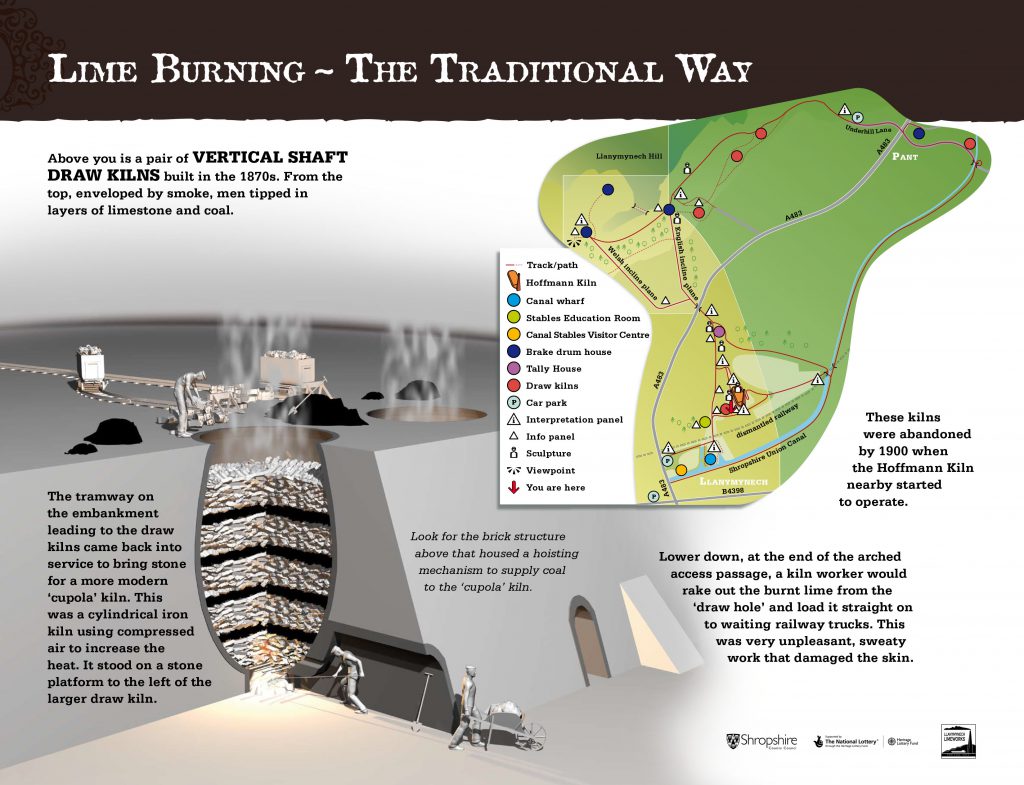
These vertical draw kilns were fed from above with limestone and coal. A tramway on the embankment carried both to the kilns.
The kilns were emptied at the bottom and when they became too clogged with clinker, the burning was halted and the kiln cleaned out. Meanwhile the other kiln would be brought into use.
Click HERE to see a larger version of the interpretation panel. Use your browser back button to return to this page.
The Office
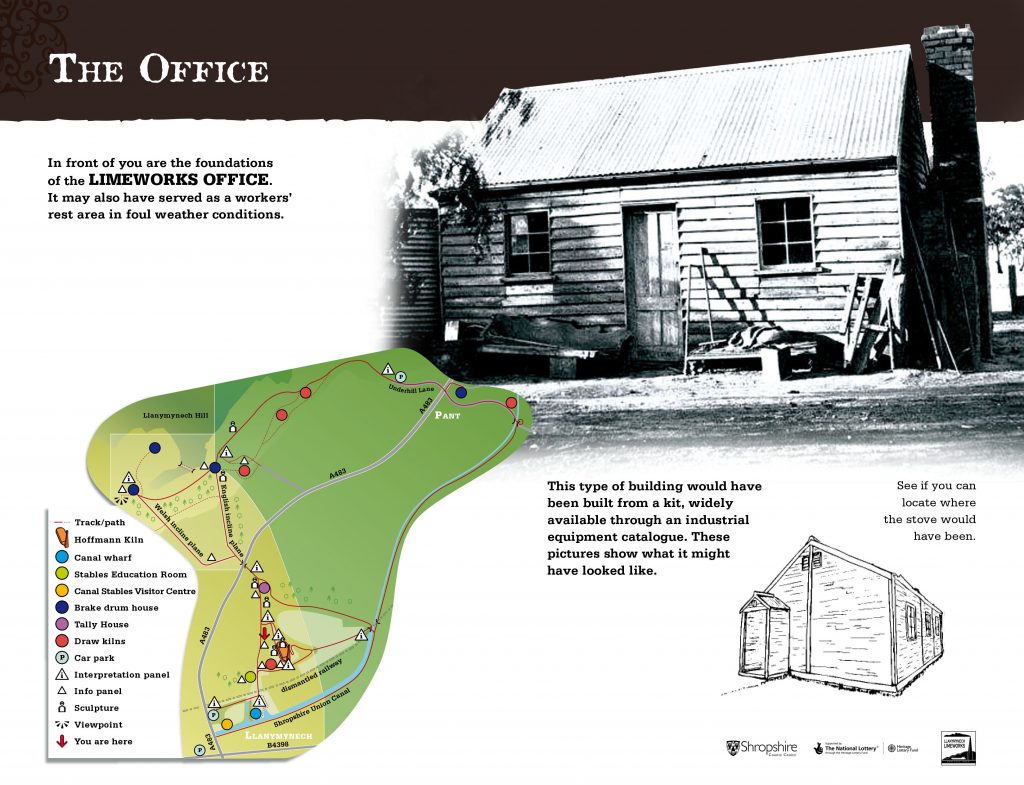
Here you can see the footings of what was thought to be the site office. The building is long gone, but from what remains we can make a good guess as to what it looked like.
Click HERE to see a larger version of the interpretation panel. Use your browser back button to return to this page.
Busy Junction
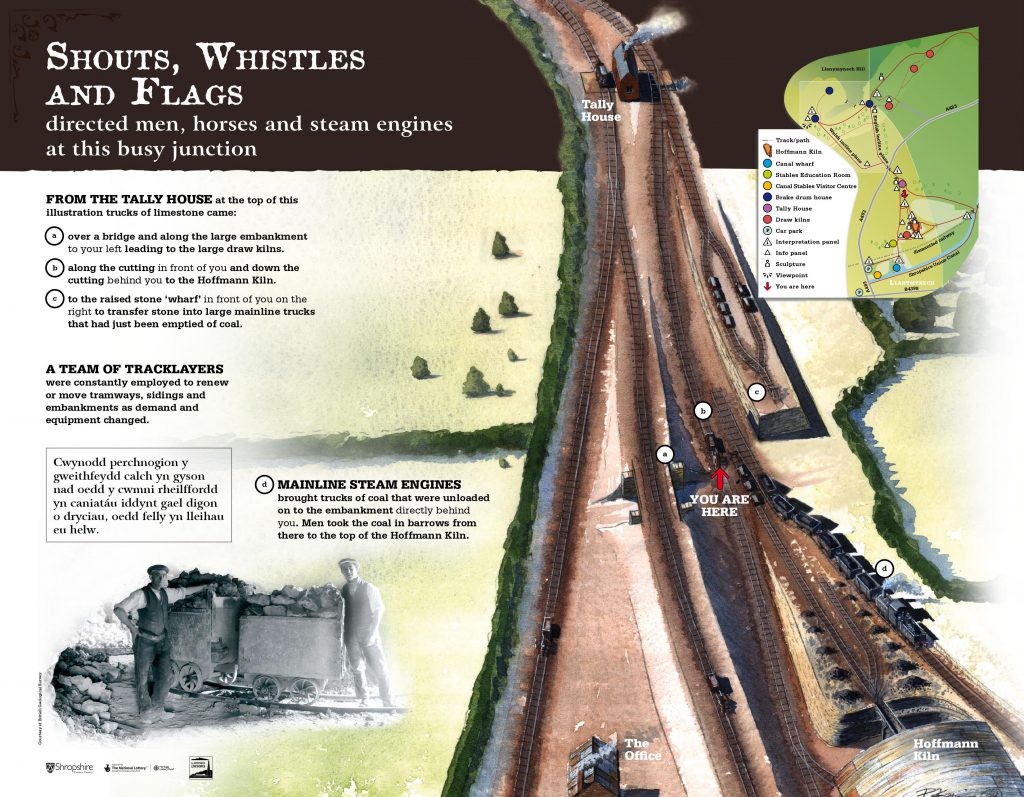
At this busy junction area, there was constant movement of trucks and engines to unload coal and load limestone.
Click HERE to see a larger version of this interpretation panel. Use your browser back button to return to this page.
The Tally House
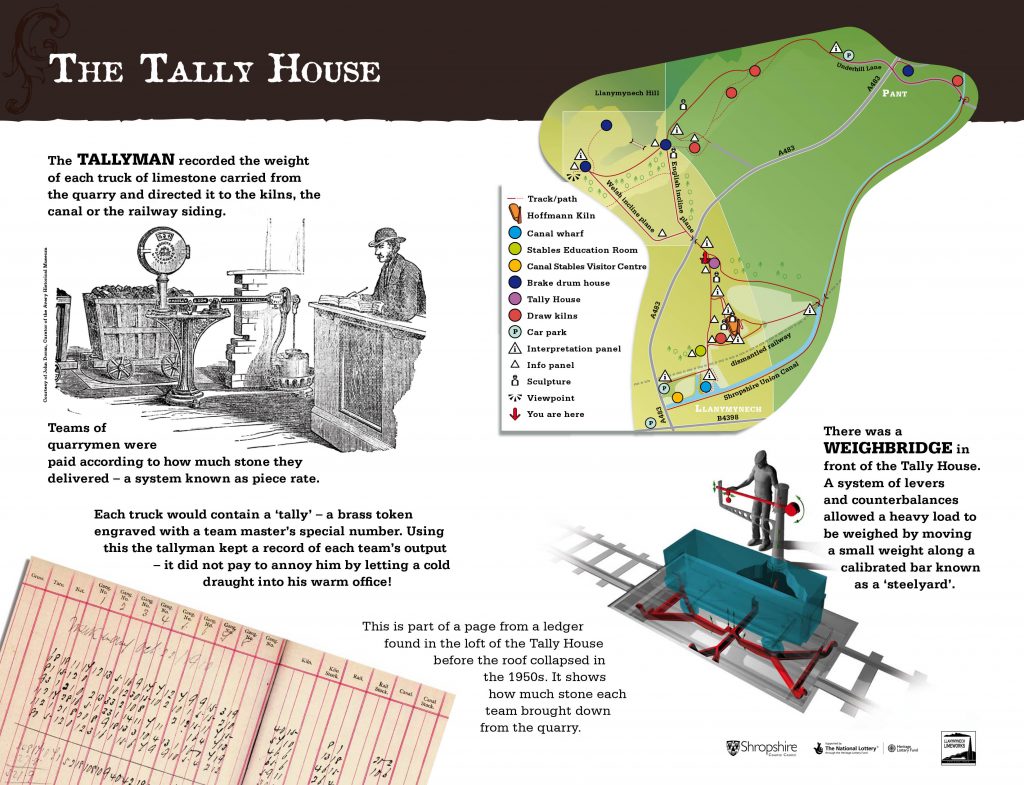
The Tally Man weighed and recorded how much rock each team had quarried. The men were paid according to the weight of stone they produced. The Tally Man then sent the trucks in different directions, to the kilns, the canal or the railway.
Click HERE to see a larger version of the interpretation panel. Use your browser back button to return to this page.
The Tunnels
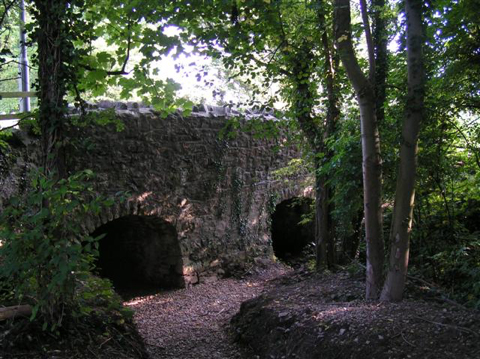
There are two tunnels, as viewed here from the North side, left side is the Welsh tunnel, right side is the English tunnel, both running under the A483. Today the LH side is used for pedestrian access, while the RH side has a small stream running through it.
Click HERE to see the interpretation panel to the south of the tunnels
Rock Men

Metal Sculpture showing men at work in the quarry
English Quarry
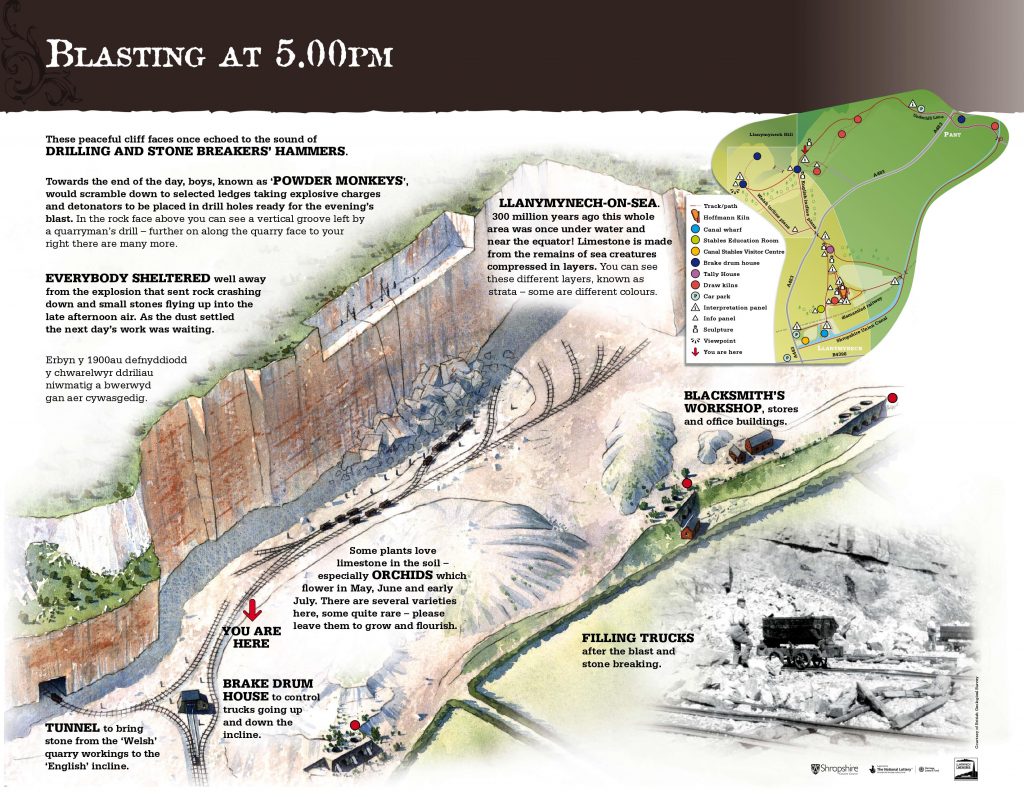
This panel shows how the quarry was mined and then the larger rocks broken up for transport down to the 'Tally Man'
See a larger version of the interpretation panel HERE. Use your browsers back button to return to this page.
Border View Point
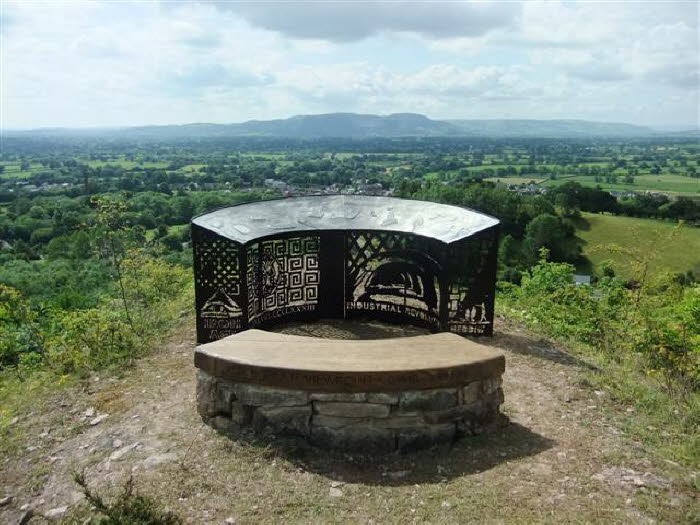
Sit and enjoy a magnificent view of the valley. More photographs of the view point can be found in the Gallery.
Click HERE to see a description of the toposcope and seat
The Tally Man
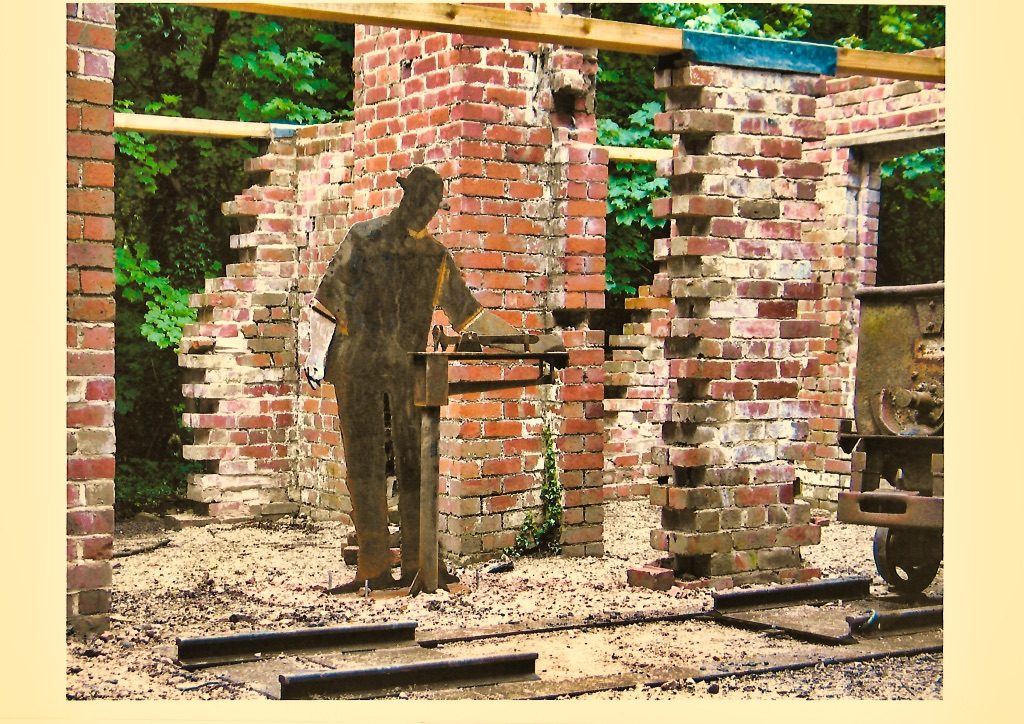
The 'Tally Man' weighed and logged the limestone sent down from the quarries, before sending it to the kilns, railway or canal.
The Brakeman
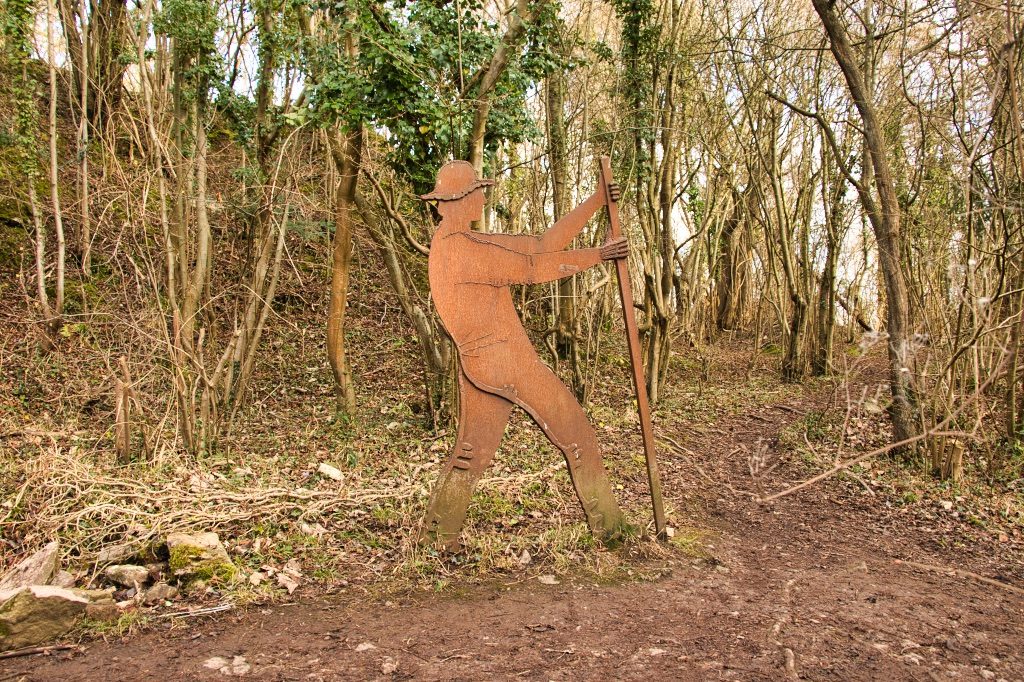
Standing at the top of the incline, the Brakeman, normally a boy, would control the descent of the loaded trucks.
Pushing The Trucks
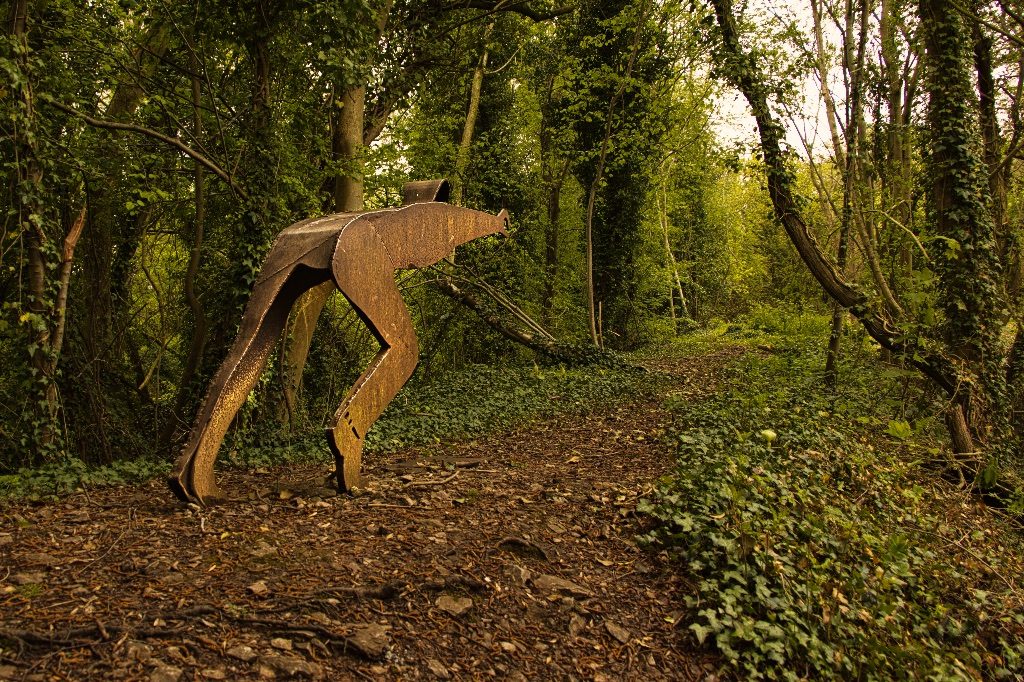
Where the donkeys were not available, manual labour was used to push the limestone laden trucks along the tramways. Back breaking work if you had to do it all day long, day in day out.
Welsh Incline
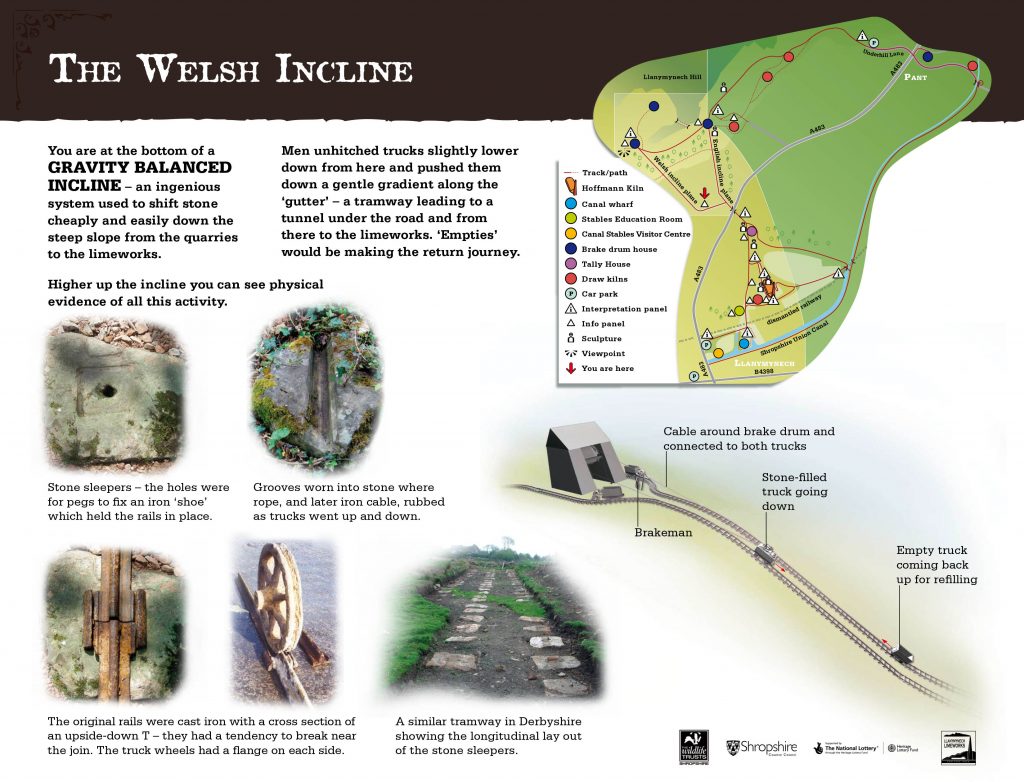
This is the Welsh 'Gravity Balanced' incline plane, which went out of service in the 1880's when the tunnel was built in the quarry connecting the Welsh and English quarries to a shorter incline.
Click HERE to see a larger version of the panel. Use your browser back button to return to this page.
Break Time
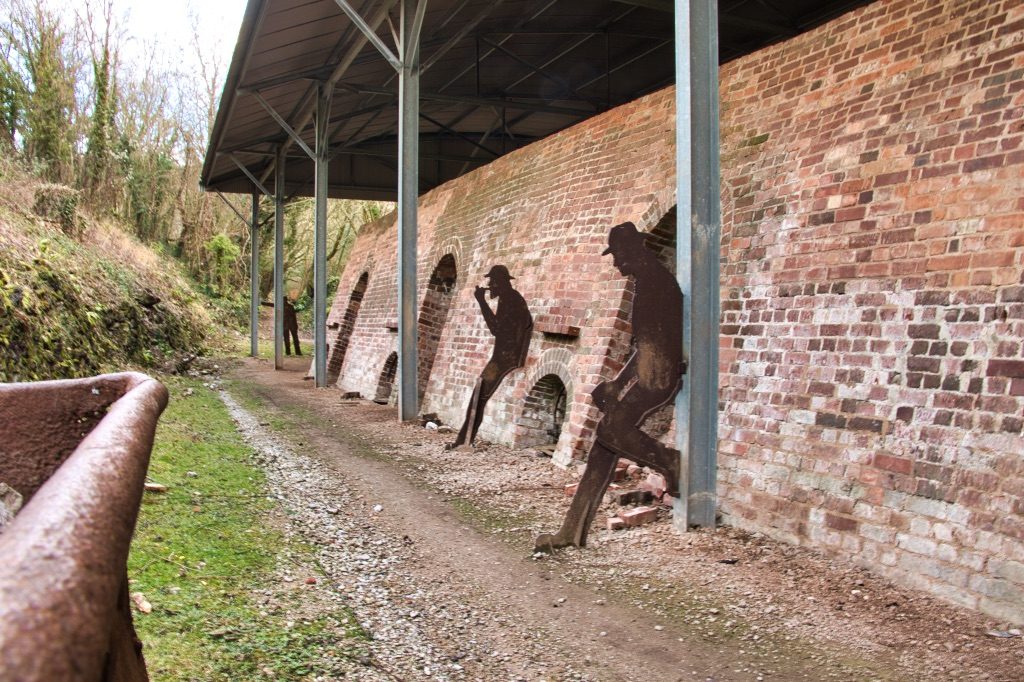
Working in the kiln was not a pleasant job, so break time would be something to cherish.
The Stoker

Coal is sent down the holes into the preheated chambers to keep the temperature above 900 degrees C to vent the carbon dioxide from the limestone leaving the quicklime.
View the panel HERE. Use your browser back button to return to this page.
Welsh Drum House
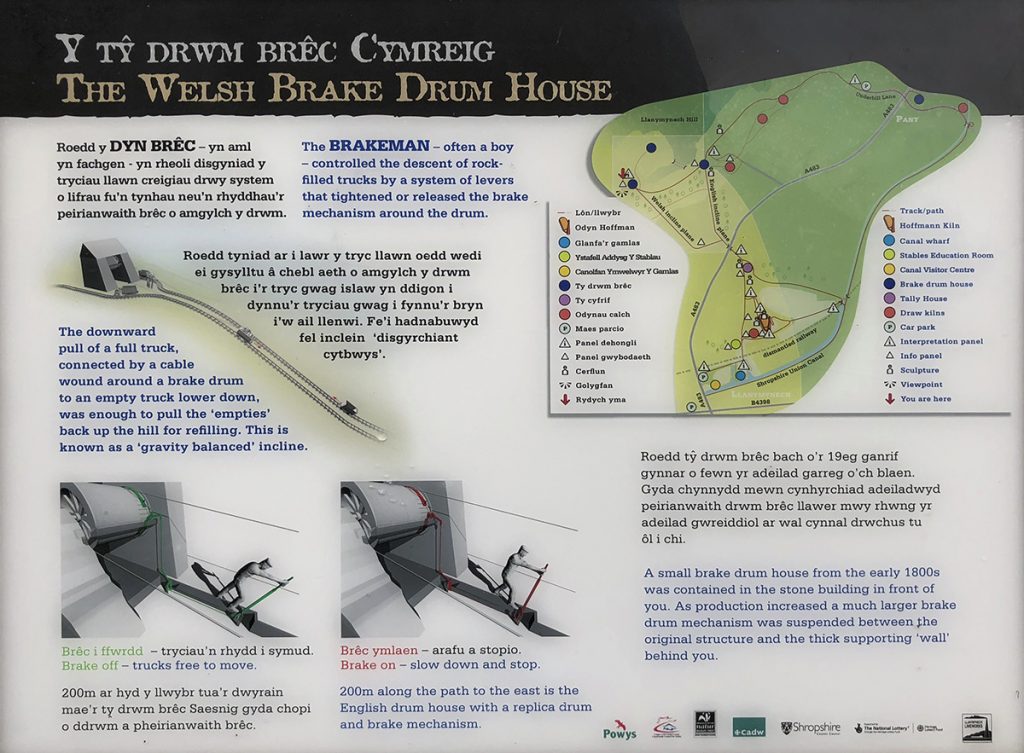
Here the 'Brakeman', often a boy, would control the descent of the fully loaded trucks.
Click HERE to see a larger version of the interpretation panel. Use your browser back button to return to this page.
Rocks Rain on the Village

One Enormous Blast, using four times the usual quantity of explosive to extract one month's worth of stone in a day. But was it worth it?
Click HERE to see a larger version of the interpretation panel. Use your browser back button to return to this page.
Red Wall Car Park

The Llanymynech Limeworks Heritage Area is a 'limescape' formed by nature and carved by its people. What we call the 'Heritage Area' is designated as a Scheduled Monument.
Click HERE to see a larger version of the interpretation panel. Use your browser back button to return to this page.
Gill's Pool
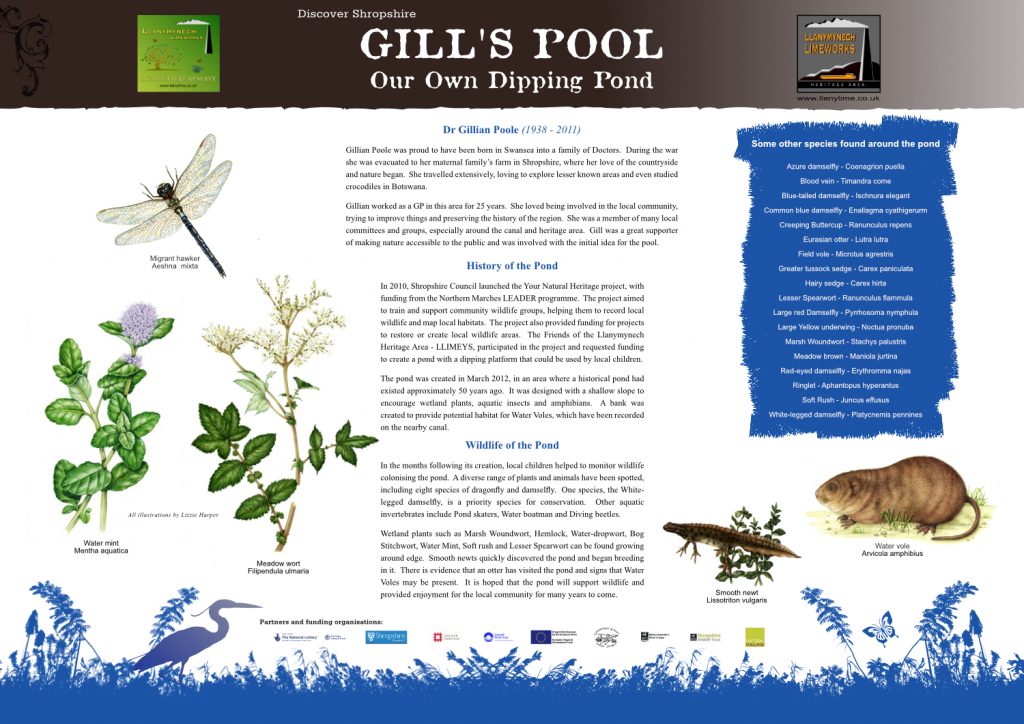
In the meadow near the Montgomery canal is a small dipping pond. The pond is dedicated to the memory of Dr. Gillian Poole, who was involved in the initial idea for the project, but sadly passed away before the pond was brought into being.
See a larger version of the panel HERE
